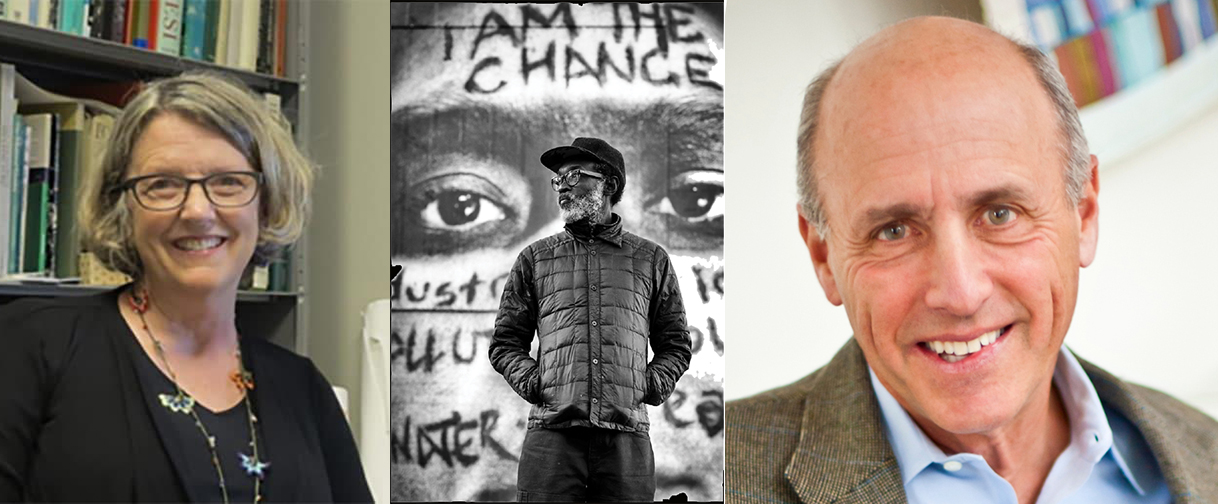
Three artists and scholars will present Hixson-Lied Visiting Artist & Scholar lectures this month to conclude the spring series.
The School of Art, Art History & Design’s Hixson-Lied Visiting Artist & Scholar Lecture Series brings notable artists, scholars and designers to Nebraska each semester to enhance the education of students.
Each lecture takes place at 5:30 p.m. in Richards Hall Rm. 15. The lectures are free and open to the public. The lectures will also be accessible remotely via Zoom.
• On Wednesday, March 23, art historian Kathryn Gleason will present her Hixson-Lied Visiting Scholar lecture. Gleason is professor of landscape architecture and a member of the Cornell Institute for Archaeology and Material Studies (CIAMS) at Cornell University. Zoom link: https://unl.zoom.us/j/92305010114.
A leading expert on the archaeology of ancient Roman gardens and designed landscapes, Gleason has directed or consulted on excavations at the palaces of Herod the Great of Judea (Israel; Palestine), the Petra Garden and Pool Project (Jordan), Horace’s Villa at Licenza and the Villa loc. Santa Maria at Nemi (Italy).
Working closely with Amina-Aicha Malek and Kim J. Hartswick, she oversaw the completion of Wilhelmina Jashemski’s Gardens of the Roman Empire publication project (Cambridge University Press 2018 and an online publication https://roman-gardens.github.io/about/).
In 2009, she began work in the Vesuvian region, first on the villa gardens of Stabiae and currently on an urban garden at Pompeii, the Casa della Regina Carolina.
• On Wednesday, April 6, interdisciplinary artist Chip Thomas will present his Hixson-Lied Visiting Artist lecture. Thomas, a.k.a. jetsonorama, is a photographer, public artist and physician, who has been working in a small clinic on the Navajo Nation since 1987. Zoom link: https://unl.zoom.us/j/93570308270.
Thomas is a photographer, public artist and physician, who has been working in a small clinic on the Navajo Nation since 1987. There, he coordinates the Painted Desert Project, which he describes as a community-building dialog that manifests as a constellation of murals painted by artists from the Navajo Nation, as well as from around the world.
Thomas’ own public artwork consists of enlarged black and white photographs pasted onto structures along the roadside, primarily on the Navajo Nation. His motivation is to reflect back to the community the love they’ve shared with him over the years.
Thomas was a 2018 Kindle Project gift recipient. In 2020, he was one of a handful of artists chosen by the United Nations to recognize the 75th anniversary of the UN’s founding. Selected artists are to generate work that contributes to the envisioning and shaping of a more resilient and sustainable future. The UN writes, “. . . Right now we are facing the greatest health challenge to the human race in a century. Covid-19 has revealed that a virus can affect not only our physical health, but also our ability to cope with the psychological impact in its wake.” Thomas spent 2021 working collaboratively to create art that is a community-based response to the pandemic.
• On Wednesday, April 13, film and art historian David Lubin will present his Hixson-Lied Visiting Scholar lecture. He is the Charlotte C. Weber Professor of Art at Wake Forest University. Zoom link: https://unl.zoom.us/j/94380775980.
Lubin’s lecture is titled “Edward Hopper and Classic American Cinema.” Hopper, an avid filmgoer in his private life, has often been regarded as the most cinematic of 20th century American painters. Lubin considers in-depth the cinematic qualities and themes of Hopper's art from the 20s through the 50s, a golden age for Hollywood, as well as for Hopper.
Lubin is the Charlotte C. Weber Professor of Art at Wake Forest University. As an undergraduate, Lubin studied filmmaking at the University of Southern California’s School of Cinema while reviewing music for “Rolling Stone.” He went on to receive his Ph.D. in American Studies from Yale.
His books include “Act of Portrayal, Picturing a Nation, Flags and Faces” and “Titanic,” a cultural-studies analysis of the blockbuster film. He has lectured at colleges, universities, medical schools and art museums throughout the United States, Europe, China, and Australia. “Shooting Kennedy: JFK and the Culture of Images” examines the photographic portrayal of Jack and Jackie Kennedy from their public courtship in 1953 to the events of Dallas ten years later. The book won the Smithsonian Institution’s Charles Eldredge Prize for “distinguished scholarship in American art.” Lubin’s latest book, “Grand Illusions: American Art and the First World War,” was published by Oxford University Press in 2016.
Lubin has been the recipient of numerous awards, including a Guggenheim Fellowship and research residencies at Harvard, Stanford, and the National Gallery’s Center for Advanced Study in the Visual Arts. In 2010 he was a visiting professor at the Free University of Berlin and in 2016-17 was the inaugural holder of the Terra Foundation for American Art Visiting Professorship at Oxford University.
Underwritten by the Hixson-Lied Endowment with additional support from other sources, the series enriches the culture of the state by providing a way for Nebraskans to interact with luminaries in the fields of art, art history and design. Each visiting artist or scholar spends one to three days on campus to meet with classes, participate in critiques and give demonstrations.
For more information on the series, contact the School of Art, Art History & Design at (402) 472-5522 or e-mail schoolaahd@unl.edu.